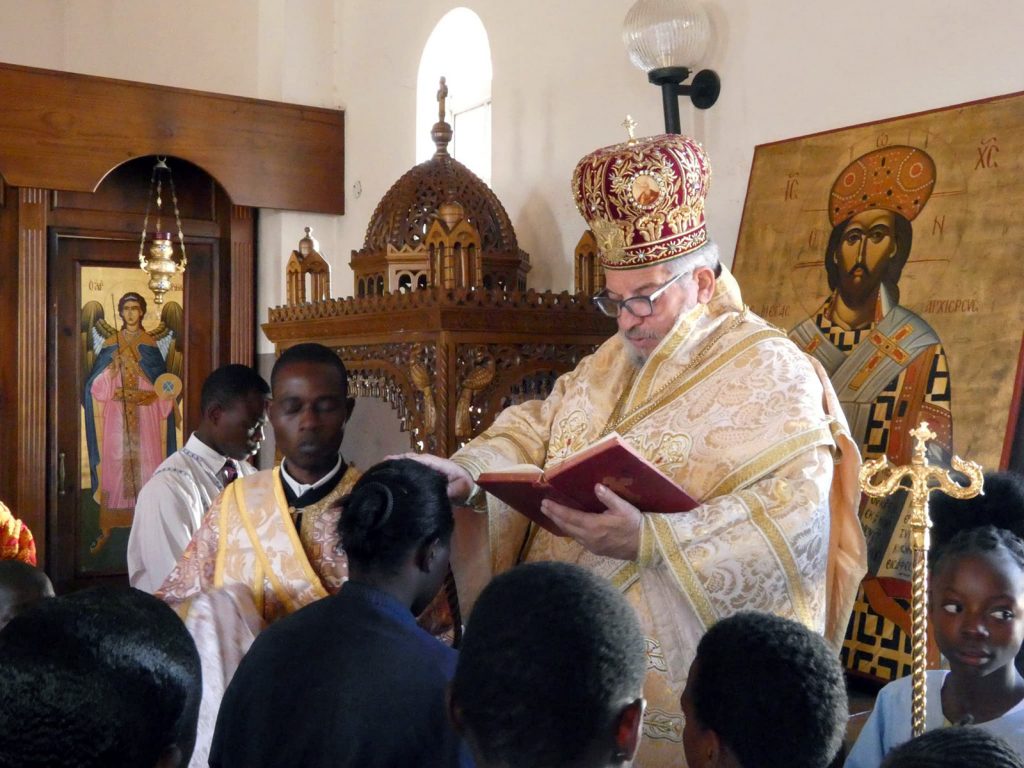
(RNS) — When the ordination of Angelic Molen of Harare, Zimbabwe, as a deaconess by Metropolitan Seraphim, the Greek Orthodox archbishop of the south African country, was announced in a press release from the St. Phoebe Center for the Deaconess, the reaction on social media was predictable: over-the-top vitriol from the usual suspects and unmitigated praise coming from the other usual suspects.
What was sadly lacking was a more nuanced conversation about the situation of the Orthodox Church in Africa, a situation that, because of the intervention of Russia, is of importance to more than Orthodox Christians.
Historically, most of Africa has been under the jurisdiction of the Patriarchate of Alexandria . Until the late 20th century, the Patriarchate primarily consisted of Egypt’s remnant Greek-speaking population and, starting in the 19th century, Greek immigrants to sub-Saharan Africa. But with the 1997 election of Pope Petros VII — Patriarchs of Alexandria were called “pope” centuries before the title became synonymous with the bishop of Rome — the Patriarchate undertook significant missionary work. Today, nearly 300,000 Africans are Orthodox Christians, the most since the days of the Roman Empire.
The hierarchy of the Patriarchate remains disproportionately ethnically Greek, but rising numbers of priests and even bishops are indigenous Africans, and missionary churches have adopted local customs and aesthetics with an ease that has eluded Orthodox Christian communities in North America and Western Europe.
This isn’t the only way Orthodox missionary growth in Africa looks different from that in the West. In recent years particularly, North American and Western European converts have been overwhelmingly politically conservative (or even far-right) young men. Some data suggests that 75% of converts to the Orthodox Church in America — the second-largest Orthodox jurisdiction in the U.S. — have been men.
In Africa, however, this disparity seems not to exist. While the exact numbers are unclear, the evidence suggests that more African women are converting than men. This trend, combined with the persistence of traditional norms governing interactions between men and women and the exclusion of widows in many traditional African societies, explained in some minds why in 2016 the Synod of the Patriarch of Alexandria voted in 2016 to “restore the ancient Order of the Deaconess.”
Metropolitan Seraphim, right, ordains Angelic Molen, kneeling, as a deaconess at the St. Nektarios Mission Parish near Harare, Zimbabwe, Thursday, May 2, 2024. (St. Phoebe Center/Annie Frost)
Shortly afterward, the Patriarch consecrated six women in the Congo as deaconesses, with the specified vocation of participating in missionary work. It’s important to note, however, that Orthodox tradition makes a distinction between “consecration” and “ordination.” In the eight years since that time, what exactly the synod’s decision to “restore” the order of deaconess means or how it would be implemented beyond the six women in the Congo had not been answered.
When the news of Molen’s ordination broke, it did little to clear up the confusion, not least because Deaconess Angelic was pictured distributing the Eurcharist: While the order of deaconess was an ancient tradition, scholars still debate whether or not they were allowed to participate in the liturgy in this way.
Within days, the Patriarchate of Alexandria had issued a statement “clarifying” the events in Harare, and indeed it seems, walking back much of what had been done there. “It is particularly pointed out that deaconesses were never established in the history of the Church as women-ministers of the Holy Mysteries,” the statement said, while reiterating that “the mission in Africa needs deaconesses, mainly for the pastoral work and for the baptisms of adult women, as well as in special cases, such as widowhood, in stricter male-dominated environments, where for a long time the widowed woman is cut off from social and church life.”
The statement has been largely ignored by those in the West, most notably the St. Phoebe Center’s discussion of the event, and has been widely shared by members of the Patriarchate of Alexandria, particularly indigenous African clergy, who recognize the real danger of having their church associated with progressive gender politics.
It is a fear that is not merely about people in pews or the size of the Sunday offering. In December of 2021, the Russian Orthodox Church established the Patriarchal Exarchate of Africa, which explicitly seeks to siphon churches, clergy and believers from the Patriarchate of Alexandria. Technically formed in response to the decision by Alexandria to recognize the independent Orthodox Church of Ukraine, most policy experts see the exarchate as a transparent attempt to extend Russian influence in Africa.
Considering the Russian Orthodox Church’s global posturing as a guardian of tradition and the Patriarchate of Alexandria’s ethnic and historical ties to the Patriarchate of Constantinople — widely seen as a more progressive force in the Orthodox world — Alexandria and her clergy seem wise to distance themselves from the implications of global culture war.
It’s a battle they might not be able to escape. The debate surrounding the Orthodox deaconesses of Africa will not relent any time soon. As with so many things in postcolonial societies, the actual conversations, issues and possibly the solutions have largely been taken out of the hands of African Orthodox Christians, at least as they exist in the Western media. This is perhaps the real lesson for all, regardless of what emotions the sight of a woman dressed in clerical garb elicits from them.
(Katherine Kelaidis, a research associate at the Institute of Orthodox Christian Studies in Cambridge, England, is the author of “Holy Russia? Holy War?” and the forthcoming “The Fourth Reformation.” The views expressed in this commentary do not necessarily reflect those of Religion News Service.)

